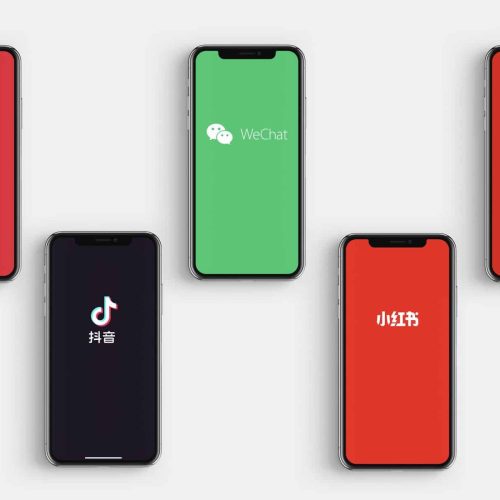Achieving marketing success in China requires a profound understanding of your audience. Chinese consumers exhibit significant diversity in profiles and preferences, even for the same product. To connect with their target audience, brands must meticulously research and adapt to these nuances.
In China, choosing the right name is crucial for effective branding. As most Chinese buyers do not read foreign languages, adopting a Chinese name is essential. A name that is easy to pronounce and carries positive meanings can significantly enhance brand recognition and appeal, while also shaping its image with the local audience.
Adapting the brand experience to fit local tastes is vital. This means more than just translating; it involves changing the brand’s message, visuals, and overall experience to resonate with Chinese consumers. A well-transcreated brand feels authentic and appealing, building stronger connections with local customers.
We turn ideas into powerful brand strategies for China, enabling brands to stand out and captivate their Chinese audience.
By understanding customer expectations and analyzing the competition, we create unique brand stories and designs tailored to the Chinese market as a creative agency.
With over 15 years of experience as a marketing agency in China, we have navigated the complexities of branding and creativity for a wide range of clients, from international brands to SMEs.
Our expertise as a creative and branding agency includes overcoming localization challenges, building brand trust, and establishing a strong presence in a highly competitive market.
We specialize in creating and managing brand identities that resonate with Chinese consumers.
Positioning is crucial. We'll discover your unique niche and strategically position you to take the lead in the market.
Craft a brand name that resonates with the Chinese Markert. Leave a lasting mark with a distinctive and unforgettable name.
We build a coherent and memorable brand identity, reinforced by extensive brand books and design standards, creating a lasting impact and distinct advantage over others.
Brand assets designed in China for the Chinese market, including packaging, brand videos and photos, and spatial design.
We create all types of content: videos, photos, social media posts, advertisements, print materials, livestreams—everything, perfectly tailored for the Chinese market.
Using AI tools, we reduce turnaround times and costs while maintaining the high quality that enhances brand visibility and impact.
Localizing a brand for China is essential because Chinese consumers have unique preferences, cultural nuances, and behaviors that differ significantly from other markets. Localization ensures that the brand resonates with the target audience, enhances brand recognition, and builds trust among Chinese consumers.
Brands in China must emphasize quality, authenticity, and cultural relevance. They often incorporate elements that align with Chinese cultural values and preferences, such as auspicious colors, symbols, and local idioms. Additionally, leveraging Chinese social media and eCommerce platforms is crucial for brand visibility and engagement.
In China, brand perception is heavily influenced by social proof, online reviews, and influencer endorsements. Chinese consumers also place high value on brand heritage, innovation, and personalized experiences. Unlike in some Western markets, Chinese consumers are more likely to engage with brands that show a deep understanding of local culture and trends.
A brand logo in China should be simple, memorable, and culturally relevant. It often incorporates elements that have positive connotations in Chinese culture, such as certain colors (e.g., red for luck and prosperity) and symbols. The logo should also be easily recognizable and adaptable across various digital and physical platforms.
A good brand name in China should be easy to pronounce, memorable, and have positive or neutral connotations. It should ideally convey the brand’s core values or benefits. Avoid names that have negative meanings or are difficult for Chinese consumers to understand and pronounce.
Cultural relevance is paramount in Chinese branding. Brands that successfully integrate local traditions, festivals, and cultural symbols into their marketing campaigns are more likely to connect with Chinese consumers and build lasting loyalty.
Influencers, or Key Opinion Leaders (KOLs), play a significant role in branding in China. They can help amplify a brand’s message, build trust, and drive engagement by leveraging their large and loyal follower base. Collaborating with the right influencers can significantly boost a brand’s visibility and credibility.
Brands can effectively use Chinese social media platforms by creating engaging and localized content, participating in trending topics, and leveraging platform-specific features like WeChat’s mini-programs and Douyin’s short videos. Consistent interaction with followers and prompt customer service are also key to building a strong online presence.
Challenges of branding in China include navigating the complex regulatory environment, understanding and adapting to rapidly changing consumer preferences, intense competition, and effectively managing brand reputation in a highly connected digital landscape. Overcoming these challenges requires deep market insights and a flexible, responsive strategy.
Chinese consumers often view foreign brands as being high-quality and prestigious, but they also value local brands for their cultural relevance and understanding of local needs. Successful foreign brands in China are those that blend their global reputation with a deep appreciation and adaptation to local tastes and preferences.

Our eCommerce agency in China supports you in achieving success on Chinese eCommerce platforms

Our social agency plans and executes social campaigns in China with the support of local influencers

Our web agency designs and develops websites and web applications tailored to deliver a localized user experience